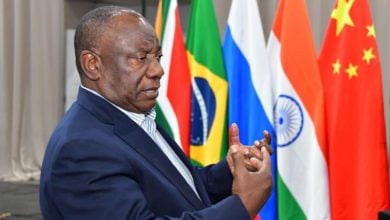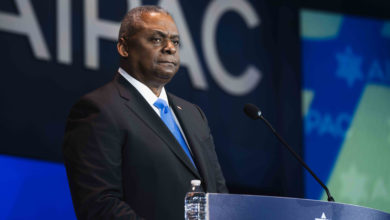March 10, 2009, marked the 50th anniversary of a failed aristocratic uprising in Tibet that led to the exile of the Dalai Lama. The corporate media, in collusion with Western imperialists, are using the anniversary as an opportunity to continue their demonization campaign targeting China.
 There are now more than 15,500 Tibetan language teachers in the Tibetan Autonomous Region. |
The aristocratic uprising failed because it did not garner popular support. After waiting in its barracks for 10 days, the People’s Liberation Army swiftly defeated the rebels. The Dalai Lama fled to India.
By 1961, Tibetan serfs voted for the first time, and in 1965, China recognized the Tibetan Autonomous Region. Since the ouster of the Dalai Lama, the Tibetan people have seen real progress in infrastructure construction, education, housing and life expectancy.
Why then do corporate media outlets and imperialist regimes give popular credence to a deposed spiritual leader who was the anointed leader of a system responsible for the widespread poverty and oppression of the Tibetan people? Support for the Dalai Lama and the “Free Tibet Movement” is part of a demonization campaign against China to further secure U.S. global economic dominance and to weaken communist China in the eyes of the world.
Tibet under the lamas
Tibet became part of the Chinese empire in the 13th century, when Ghenghis Khan conquered it. The political rule of the lamas began later, at the end of the 16th century. Under the lamas, the monasteries, the nobility and the Lhasa government controlled the land, retaining absolute power over the lives of the peasants and serfs, who made up about 90 percent of the populace. There were no schools or health care, yet peasants supported the wealthy monasteries through rampant taxation and child conscription.
After the 1949 revolution in China, the revolutionary government treaded slowly in changing the political structure of Tibet. Tibetan and Chinese leaders signed the “Agreement of the Central People’s Government and the Tibetan Local Government on Measures for Peaceful Liberation of Tibet,” or the 17-Point Agreement, in 1951. The accord recognized and promoted the preservation of Tibetan language and culture. In the decades following the agreements, the theocracy was slowly dismantled, slavery was abolished and serfs and peasants were hired for public works projects necessary to modernize the region.
Progress made under the revolution
Tibet has come a long way since the days of serfdom and theocracy. The communists have built over 44,000 km of roads throughout the region. Due to available health care, the average life expectancy of people in Tibet has increased by 32.5 years.
Under the lamas, less than 2 percent of school-aged children had access to education, and the illiteracy rate was over 95 percent. Now, nine-year compulsory education is available in 63 out of 73 counties, and the illiteracy rate among workers has dropped to 4.76 percent. Housing is guaranteed as a right. Over 4,000 religious and cultural sites have been preserved and funded by the government.
The demonization campaign against China
The Dalai Lama—not the gains made by the Tibetan people—took center stage in the corporate media for the week of the anniversary. The Dalai Lama claimed that Tibet has become a “hell on earth,” and that the Tibetan language and culture are nearing extinction.
Adulation for the Dalai Lama among imperialists is nothing new. The U.S. Central Intelligence Agency began to fund and train counterrevolutionary military units in Tibet in the early 1950s. Many of those recruited were members of the former elite.
From the early 1960s until 1973, the Tibetan “government in exile” received approximately $1.7 million per year from the CIA to airlift counterrevolutionaries into Tibet to attack the government.
The leader of this movement, the Dalai Lama, was awarded the Nobel Prize for peace and the U.S. Congressional Medal of Honor. In March 2008, groups supporting the Dalai Lama and the “Free Tibet Movement” ravaged the streets of Lhasa, murdering Han Chinese and vandalizing Chinese homes and businesses.
The media blitz surrounding the 50th anniversary of the 1959 aristocratic rebellion in Tibet is a ruse. The track record of the United States in Iraq and Afghanistan shows that the ruling class is far from concerned with human rights and religious freedom. Nevertheless, demonizing China and supporting an illegitimate “Free Tibet Movement” are useful tools as the United States seeks to undermine China’s growing global strength.
True solidarity with the people of Tibet means standing against the demonization of China and supporting Tibetan freedom from imperialist intervention and brutal aristocratic rule.






